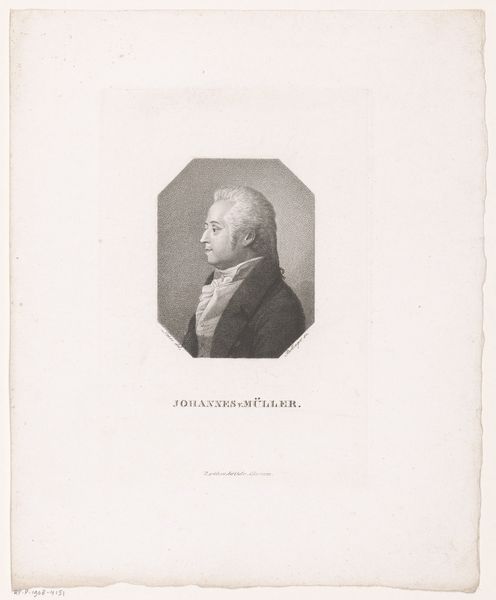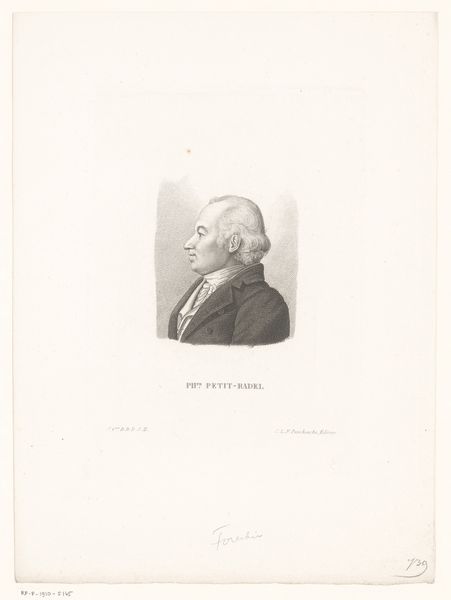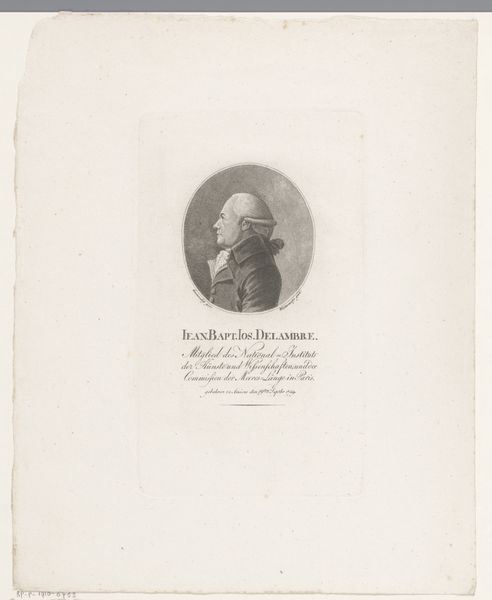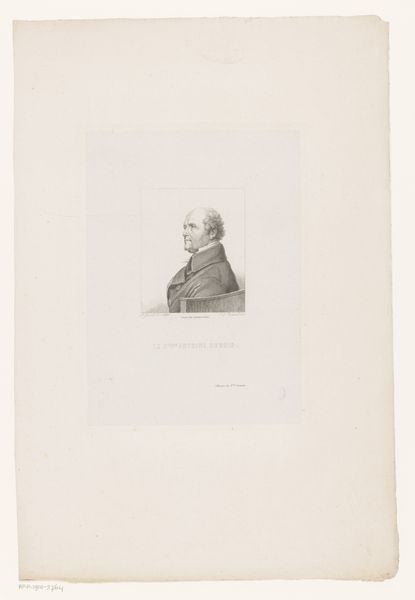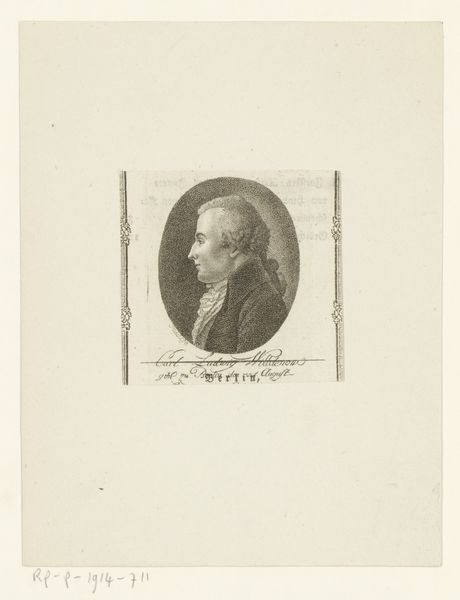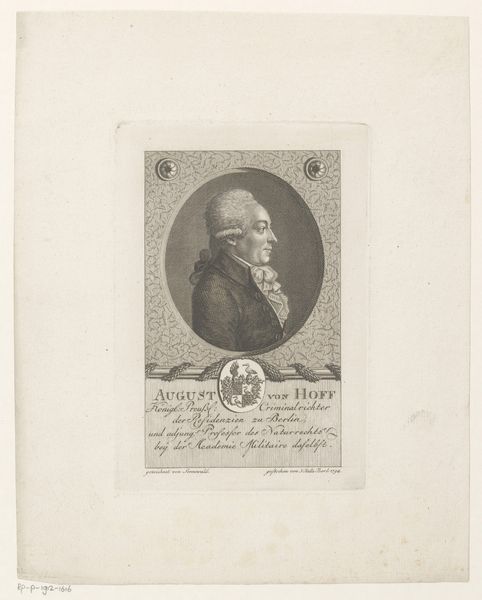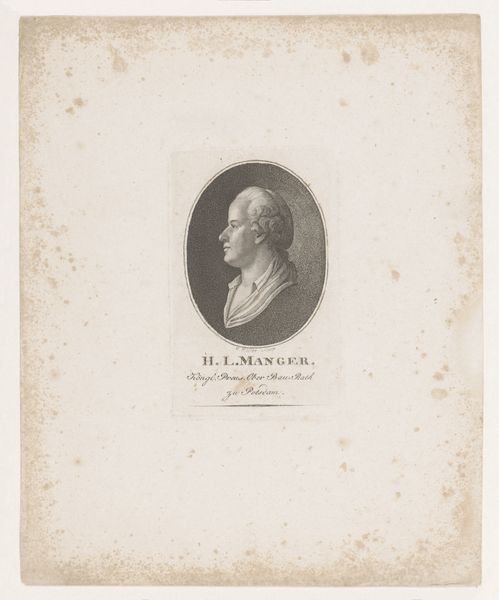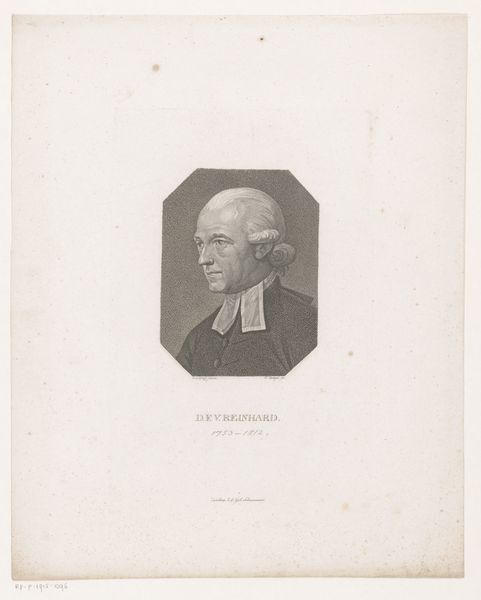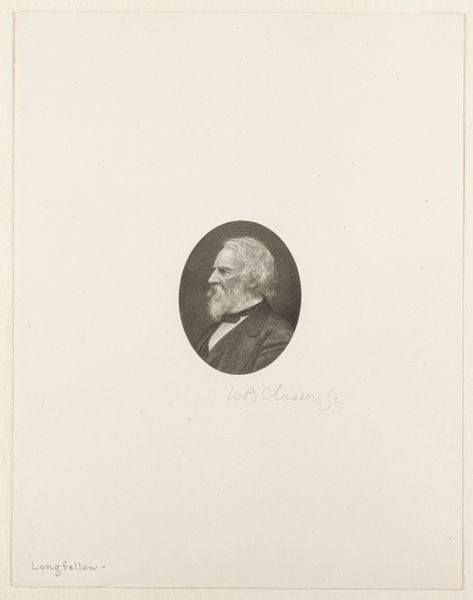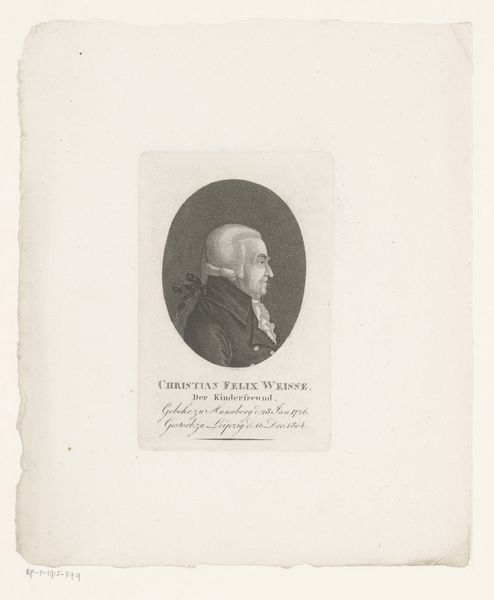
print, etching, engraving
#
portrait
#
pencil drawn
#
neoclacissism
#
light pencil work
# print
#
etching
#
pencil sketch
#
old engraving style
#
form
#
pencil drawing
#
line
#
engraving
Dimensions: height 182 mm, width 120 mm
Copyright: Rijks Museum: Open Domain
Editor: We’re looking at Anton Wachsmann’s "Portret van Edward Sir Codrington," dating roughly from 1818 to 1832. It's an engraving – rather stately. I find the man portrayed so…serious. Almost severe. What strikes you about this portrait? Curator: Ah, Codrington! Well, the interesting thing about portraits is, aren't they all a bit of performance? He probably held that gaze! Wachsmann’s clean lines really do capture the neo-classical spirit, which always feels like a self-conscious reach back to some imagined Roman ideal. Notice how sharp and economical his lines are. It’s all very… purposeful. Is it successful in its aims, though? That's always the question, isn't it? Do we believe in Codrington's gravity? Or do we think it's an act? Editor: That’s a great point – the ‘act’ of portraiture. It DOES feel a bit…forced. But how can you tell if it’s successful? What should I be looking for? Curator: Good question! Ask yourself, does the face offer a suggestion of interiority, or does it shut us out? For me, I get the sense that he is inviting us in, as a gentleman is prone to do. It's less about precise, objective "truth," and more about suggestion, evocation… a little whisper of the subject's perceived character. Do you get that whisper? Or does the subject tell a tale, maybe? Editor: I think…a whisper. It’s growing on me. Curator: There you go! Isn't that often how it happens? These artworks can be a bit like those people who you eventually warm up to after spending a significant amount of time with them! Editor: I agree! Thanks for making me reconsider my initial response – I definitely see it differently now.
Comments
No comments
Be the first to comment and join the conversation on the ultimate creative platform.

